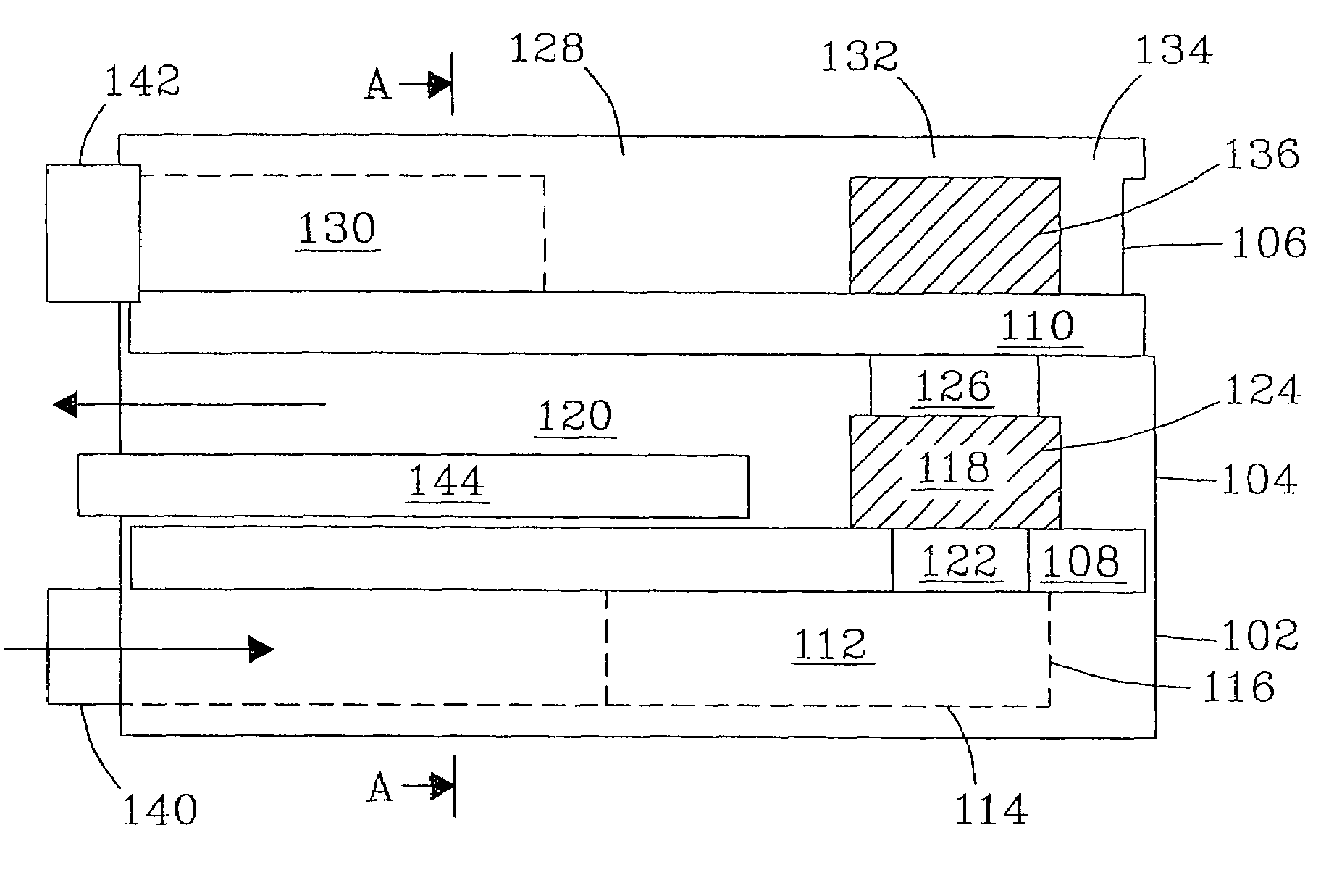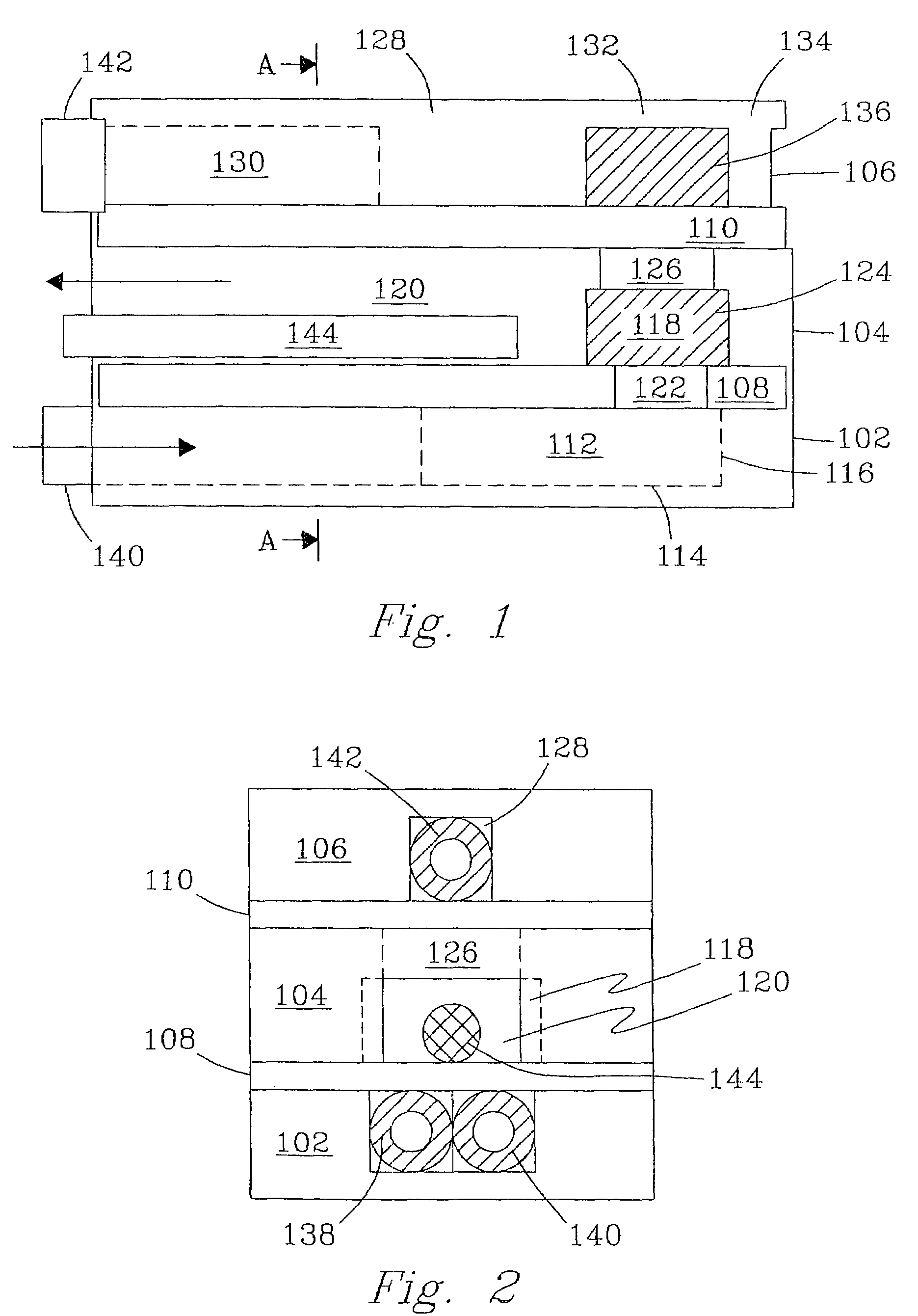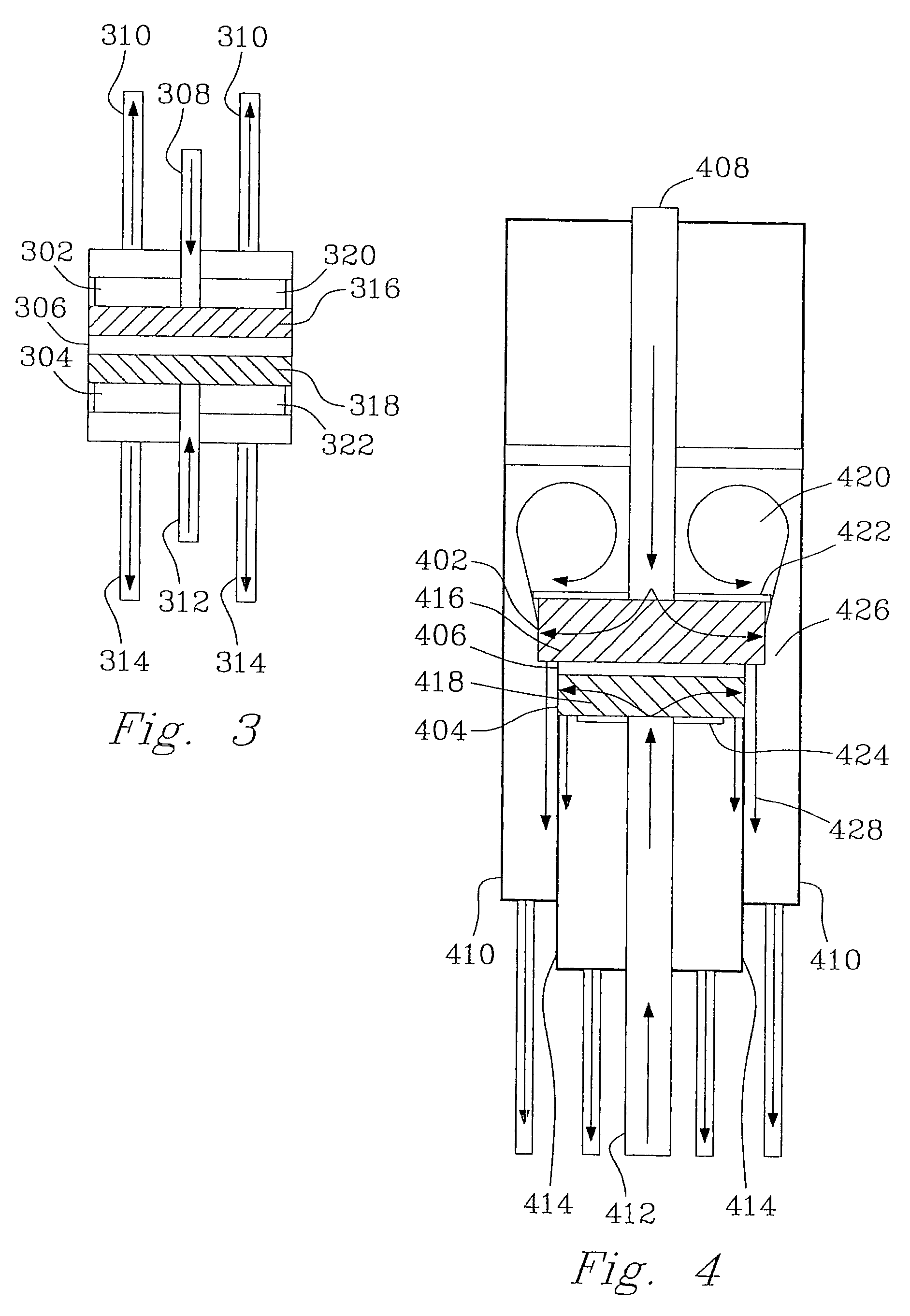Microcombustors, microreformers, and methods for combusting and for reforming fluids
a micro-combustion and micro-reformer technology, applied in the direction of combustion types, sustainable manufacturing/processing, furnaces, etc., can solve the problems of difficult heat generation of endothermic reforming processes, low energy density of current battery technology, and inability to provide stable heat for endothermic reforming processes. achieve the effect of desirable performance capability
- Summary
- Abstract
- Description
- Claims
- Application Information
AI Technical Summary
Benefits of technology
Problems solved by technology
Method used
Image
Examples
example
[0105]An integrated fuel processor system composed of two vaporizers / preheaters, a reformer, catalytic combustor, and heat exchanger was built and tested. For each of these designs the manufacture and assembly were performed in the same fashion. Metal pieces were cut and machined from standard stainless steel stock. Ceramic pieces were formed and machined using standard ceramics molding and shaping techniques. Tubing and fittings were cut to fit as required.
[0106]The following example is for a device such as illustrated in FIG. 3. For preassembly, all of the tubing, catalyst pieces, and respective reactor parts were cut per specifications. Plungers were joined to tubing using standard, high-temperature adhesives. In the alternative, high-temperature soldering could be used for some or all joins. All tubing and the plunger assemblies were inserted through the end-caps or end-seals and set to their appropriate positions for final assembly.
[0107]The first step in the assembly process w...
PUM
| Property | Measurement | Unit |
|---|---|---|
| Temperature | aaaaa | aaaaa |
| Fraction | aaaaa | aaaaa |
| Fraction | aaaaa | aaaaa |
Abstract
Description
Claims
Application Information
 Login to View More
Login to View More - R&D
- Intellectual Property
- Life Sciences
- Materials
- Tech Scout
- Unparalleled Data Quality
- Higher Quality Content
- 60% Fewer Hallucinations
Browse by: Latest US Patents, China's latest patents, Technical Efficacy Thesaurus, Application Domain, Technology Topic, Popular Technical Reports.
© 2025 PatSnap. All rights reserved.Legal|Privacy policy|Modern Slavery Act Transparency Statement|Sitemap|About US| Contact US: help@patsnap.com



